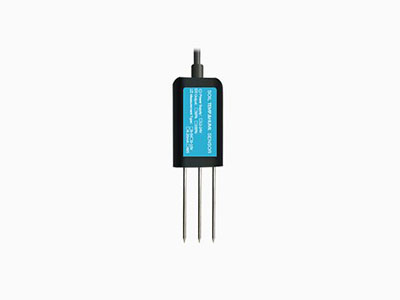In the intricate dance of nature and agriculture, where the whims of weather and the resilience of crops meet, the role of technology has never been more crucial. Agricultural meteorological stations, or agro-meteorological stations, stand as sentinels in this dance, gathering invaluable data that enhances our ability to predict crop yields with unprecedented accuracy. These stations represent a fusion of advanced technology and centuries-old agricultural wisdom, offering farmers a window into the future that can guide their decisions and maximize productivity.

The Evolution of Agricultural Meteorology
The field of agricultural meteorology has evolved significantly since its inception. Initially, farmers relied on intuition, local knowledge, and oral traditions passed down through generations to anticipate weather patterns and manage their crops. However, with the advent of modern technology, particularly in the last few decades, the precision and reliability of weather predictions have soared. Agricultural meteorological stations have emerged as a cornerstone of this technological revolution.
These stations are equipped with a suite of sensors designed to measure various meteorological parameters such as temperature, humidity, precipitation, wind speed and direction, solar radiation, and soil moisture. The data collected from these sensors is then processed using sophisticated algorithms and models to provide farmers with actionable insights. Whether it’s determining the optimal planting window, managing irrigation schedules, or predicting potential pest outbreaks, agro-meteorological stations empower farmers to make data-driven decisions.
Enhancing Crop Yield Predictions
One of the most significant benefits of agricultural meteorological stations is their ability to enhance crop yield predictions. Traditional methods of yield prediction often relied on historical data and broad-scale weather forecasts, which could be inaccurate due to local variations in climate. By contrast, agro-meteorological stations provide real-time, localized data that captures the nuances of a specific farm’s microclimate.
For instance, temperature fluctuations during critical growth stages of a crop can significantly impact yield. Too hot or too cold, and the plants may suffer stress, reducing their productivity. Agricultural meteorological stations monitor these temperature changes continuously, alerting farmers to potential threats and enabling them to take mitigating actions, such as using shade cloths or irrigation to regulate temperatures.
Similarly, soil moisture levels are crucial for crop health and yield. Excessive moisture can lead to root rot and fungal diseases, while insufficient moisture can stress the plants, reducing photosynthesis and nutrient uptake. By monitoring soil moisture levels, agro-meteorological stations help farmers maintain optimal soil conditions, ensuring that their crops receive the right amount of water at the right time.
Integrating with Precision Agriculture
The integration of agricultural meteorological stations with precision agriculture practices further amplifies their benefits. Precision agriculture leverages advanced technologies such as drones, satellite imagery, and GPS to manage crops with unprecedented accuracy. When combined with data from agro-meteorological stations, these technologies provide farmers with a comprehensive view of their fields, enabling them to tailor management practices to specific areas within their fields.
For example, satellite imagery can detect variations in crop health and vigor across a field. By cross-referencing this data with meteorological information from the stations, farmers can pinpoint areas that are experiencing stress due to specific weather conditions. They can then apply targeted treatments, such as fertilizers or pesticides, only where needed, reducing costs and environmental impact.
Addressing Climate Change Challenges
In an era marked by climate change, the ability to predict and adapt to weather patterns is more critical than ever. Agricultural meteorological stations play a pivotal role in helping farmers navigate the uncertainties posed by shifting climate zones, increased frequency of extreme weather events, and changes in precipitation patterns.
By continuously monitoring weather conditions and analyzing long-term trends, these stations provide farmers with early warnings of potential climate-related threats. This information enables them to adopt resilient farming practices, such as planting heat-tolerant or drought-resistant crop varieties, or implementing conservation tillage to improve soil health and water retention.
Moreover, the data collected by agro-meteorological stations contributes to broader scientific research efforts aimed at understanding and mitigating the impacts of climate change on agriculture. By sharing this data with research institutions and government agencies, farmers contribute to the development of policies and practices that can safeguard food security in a changing world.
The Future of Agricultural Meteorology
The future of agricultural meteorology is bright, with ongoing advancements in sensor technology, data analytics, and artificial intelligence promising even greater precision and reliability in crop yield predictions. As the Internet of Things (IoT) becomes more integrated into agricultural practices, agro-meteorological stations will become more interconnected, forming a network of smart farms that share data and insights.
This interconnectedness will facilitate the development of more sophisticated predictive models, capable of accounting for a wider range of variables and providing farmers with even more detailed and accurate forecasts. In addition, the integration of machine learning algorithms will enable these models to learn and adapt over time, improving their performance as more data is collected.
Conclusion
Agricultural meteorological stations are a testament to the power of technology in enhancing agricultural productivity. By providing real-time, localized weather data, these stations enable farmers to make informed decisions that maximize crop yields, reduce costs, and minimize environmental impact. As we face the challenges posed by climate change, the role of agro-meteorological stations in safeguarding food security becomes even more critical.
As technology continues to evolve, the capabilities of these stations will only expand, offering farmers an increasingly comprehensive view of their farms and the environment in which they operate. The fusion of agricultural meteorology with precision agriculture practices represents a promising future for agriculture, one where technology and nature work in harmony to nourish a growing world.